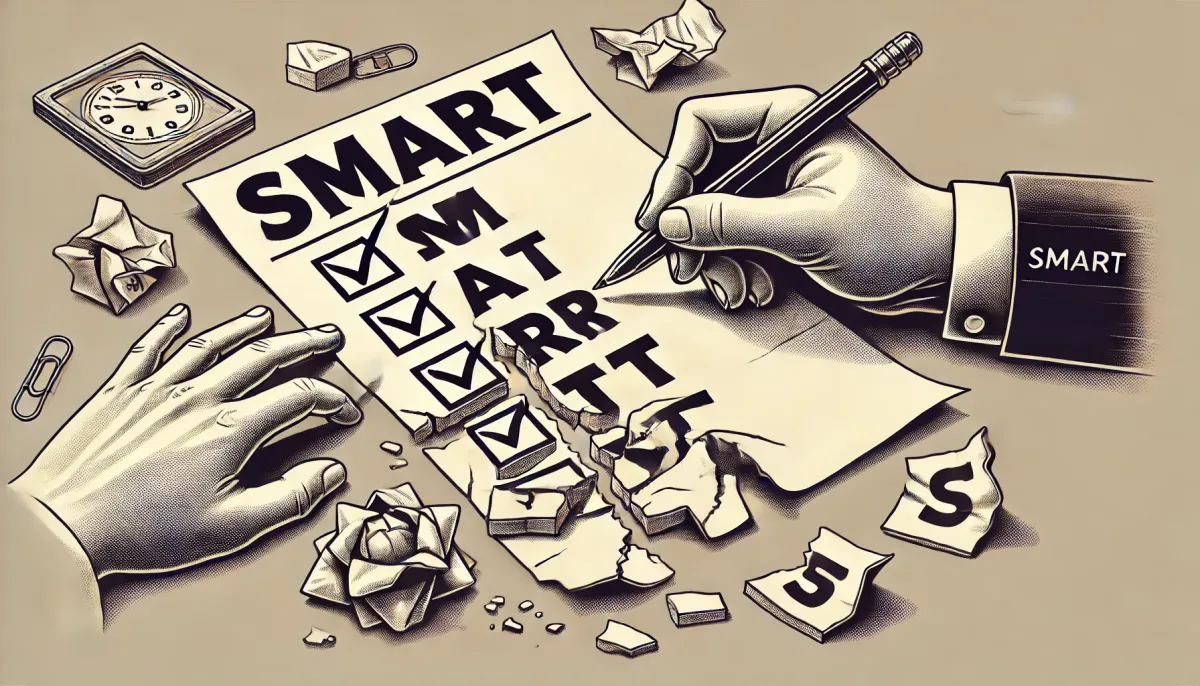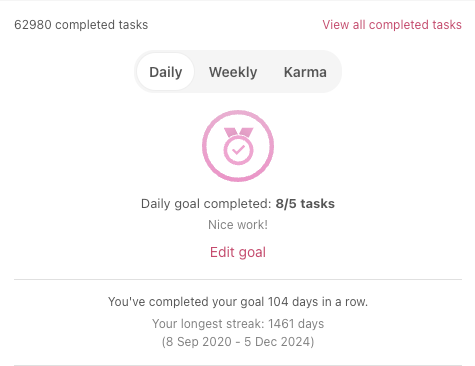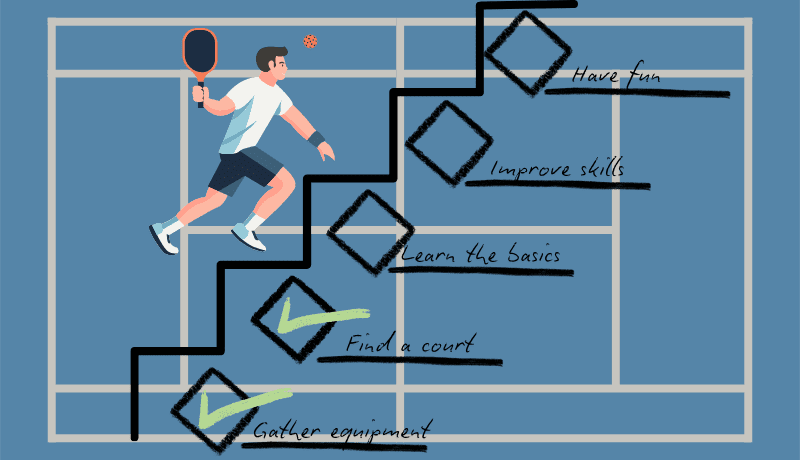Milestones vs. Tasks. Mastering Both
Online, you can discover some aspects about the proper setting of goals. What about milestones and tasks? Focusing on them can ensure forward progress in personal productivity and project management, paying you back good.

Why Does SMART Work Poorly in Project Management?
You are probably familiar with the SMART technique [1]. It suggests that a properly set project goals should meet the following criteria: Strategic, Measurable, Aggressive, Result-based, Timely. Or maybe this: Specific, Measurable, Achievable, Relevant, Time-bound? It doesn’t matter that there is a difference here. Out of the possible 640 interpretations of the acronym, everyone can succeed creating what suits them.
This apparent lack of consistency might not impress a thoughtful project management. Especially the one which wants to create a productive working environment for their employees and then track progress carefully. Such an environment is crucial for on-time project success. Moreover, applying the SMART method to every milestone and all project tasks is sometimes simply meaningless. How measurable is “Remind colleagues about tomorrow’s meeting at 10:00”?
If you wish to set milestones or tasks for yourself or employees more effectively, you should use more appropriate rules. To achieve this, we will first highlight the difference in the used terms.
Goal, Milestones, and Tasks
On the web, sometimes the words “goal”, “milestone” and “task” are confused. We will use definitions to form a coherent picture.
The Cambridge Dictionary defines “goal” as follows [2]:
a purpose, or something that you want to achieve.
“Milestone” has the following definition [3]:
a stage in a project that can be used to measure progress towards its final goal.
Milestones can be used to delineate major phases within a project, providing clear checkpoints for progress. Usually, you want to see them in your project charter.
“Task” is defined as follows [4]:
a piece of work to be done, especially one done regularly, unwillingly, or with difficulty.
Thus, a task is a part of the path to a milestone, and a milestone is a part of a path to a goal.
Let's put aside the goal for the rest of the article and concentrate on the other two.
Three Types of Statements
There is not that much knowledge to share, but you can state what's required in several ways:
- Completely inconvenient;
- Convenient for understanding the whole picture (milestone),
- Convenient for execution (task).
Completely Inconvenient Statements
Completely inconvenient statements are those that do not follow any recommendations at all. For example, a project milestone might be stated as “Report.” What report? Who are the task owners? How to monitor deadlines? From such a short statement, nothing can be understood.
No project management can be built on top of it. A major event, such as a project review meeting requiring this report, needs much clearer definitions.
Statements Convenient for Understanding
Statements that are convenient for understanding talk about significant things. These could be project deliverables, important stakeholders meetings.
Continuing the previous example: “Prepare a report on the correspondence to project schedule for this month for the project manager by Friday 12:00.” Such a statement is convenient to think about. But is it convenient to do?
This is a fair question. If the report is complete with a few mouse clicks, then it's okay. Such a statement is also convenient for execution. However, if the preparation of the report has repeatedly required hours of continuous effort and significant resources' involvement, then it is inconvenient for the performer. Then it's a little milestone task on itself.
Statements That Are Convenient for Execution
Statements that are convenient for execution do not allow you to always see the significant point of work or big project’s objectives but give you tasks you can handle.
Here is an example of such a statement: “Dedicate an hour to preparing a report on the project timeline for the manager daily from 11:00 to 12:00.”
If you start working on Monday a week ahead, by this week Friday you will have 10 hours of work done. As a result of this effort, you will have the desired report on project execution progress prepared.
How to Work with Tasks and Milestones?
It is better not to work with completely inconvenient statements, trying to pretend they are either milestones or tasks. The name speaks for itself, you shouldn’t have them in your project plan. Most likely, they were desired to be something useful. Such statements need to be reformulated.
The process of working with milestones and tasks is as follows:
- Define milestones that are convenient for understanding the picture; It is important to identify project milestones, as they help you see the big steps made towards the goal.
- To move towards the defined, set the necessary set of tasks convenient for execution.
It is essential that the tasks lead to the desired milestone. The plan for you, your project, your team, or the company is not set in stone (despite the structure of the word “milestone”). As the project progresses, you can change the number of tasks and even add milestones in between.
Be they half a mile or even a quarter, it doesn’t matter. Gather feedback and change the initial path of your team for its more accurate direction. Project milestones act as a guidance.
It may also turn out that the past project phase shows the initial milestone to be wrong. This is not scary; it can also be reworded to ensure the correct next project stage.
In the report example above, there may be worries on the first Wednesday that at the current pace of work, the project manager will not receive the needed report on the project’s health by Friday. Not a problem. Since today, we start our work not at 11:00 but at 10:30, and check our expectations again on Thursday.
How to Formulate Key Milestones and Tasks Properly?
In the article about action checklists and inspection checklists, we have already considered one of the rules for proper task writing. Let's look at it and a few more.
The first two rules are extracted from the excellent book “Jedi Techniques”. This book is so good that sometimes I want to recommend it to anyone interested in personal productivity. But unfortunately, there is no English version of it, only the draft of the three first chapters.
The remaining rules come from my experience. Currently, I hold a bachelor's degree in project management, five years of team management experience and almost 63,000 completed tasks in the to-do application. So there is knowledge, experience, and results. I could be a common fish among project managers, but I am a software engineering manager.🙂

So, the List of Rules for Proper Project Milestones and Tasks Writing
- Answer the Right Question
- Start with a Verb
- Use Clear Wording
- Avoid Commas
- Set Deadlines
- Define Time, Place, and Context
Answer the Right Question
The milestone or task statement should sound like an answer to the question “what needs to be done?”
Start with a Verb
The statement should start with a verb.
Use Clear Wording
Write the task following the rules of written speech for sentence. The detailed wording helps to identify omissions and come up with a more complete work breakdown structure of project phases in the end.
Avoid Commas
Formulate tasks without commas. If a comma is necessary, assess whether you have hidden a second implicit task. Comma is a good mark of it. If you have another task hidden in your current one, extract it. They also might highlight potential bottlenecks or project delays.
Set Deadlines
Set deadlines for project management milestones.
Define Time, Place, and Context
Place the task in a clearly defined time, place, and context. If on Thursday morning from 10:00 to 12:00 we meet with a client, then there's no need to talk about preparing a report on project progress. Although, the preparation can be assigned to someone else in your company. On the other hand, if you are in the office currently and have allocated time, but the power is out, then excuse me, the context is lost.
Hidden Complexity Example
When tasks have thoughtful wording, they allow you to determine problems and eliminate them. Even if the issue cannot be eliminated, it can be circumvented.
Here is an example of a completely inconvenient statement:
Water in the office
Nothing foretells trouble. Let's state it in details:
Order water in the office by next Wednesday, having previously chosen a water supplier
There is a significant amount of work hidden here, it's a compressed milestone! First, you need to discover the suppliers, choose the most suitable one by negotiating the “Water” project budget, contact, sign a contract, and only then place the first order.
Don’t let this compression spoil your critical tasks.
Conclusion
The rules mentioned above are highly practical because they do not depend on the aspects of the project management systems, Gantt chart milestones drawing tools and other technical dependencies. These rules can be applied for personal productivity systems as well as for setting milestones and tasks for entire teams in the big projects.
However, don't treat them as a complete project management body of knowledge. You still need key deliverables, resources planning, schedule preparation, issues resolution, risk management and many more.
However, the building block, be it a big project milestone or one of your personal tasks, will now be of a much higher quality. They will also contain less uncertainty, which leads in the end to less wasted effort and less risky achievement of the important events.
Milestones, tasks, as well as checklist items, benefit from well-done wording, just as tools benefit from competent design.
Was it great to gain the knowledge about milestones and tasks? Subscribe to the “So List” blog and discover more about the forms lists- and checklists-based management practices. You’ll be amazed by the power of these instruments!
List of Links
[1] “SMART criteria” from Wikipedia
[2] “Goal” from Cambridge Dictionary
[3] “Milestone” from Cambridge Dictionary
[4] “Task” from Cambridge Dictionary



